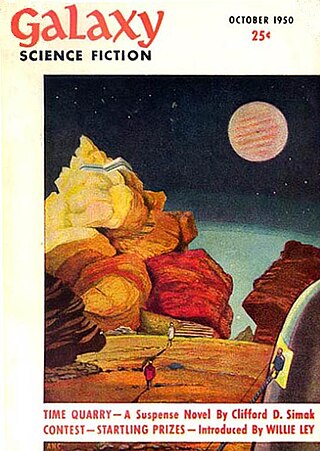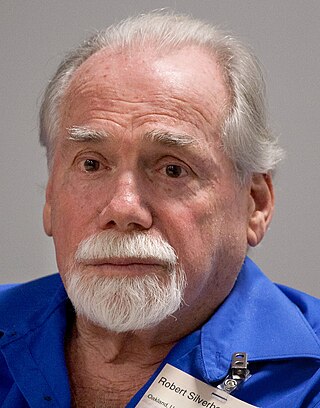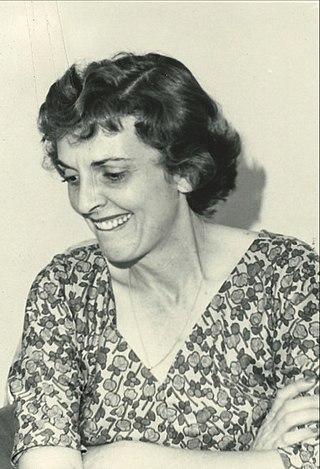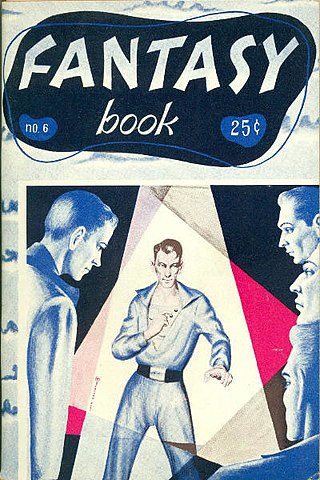Plot summary
Conscious humans cannot travel through space because of an effect called the "Great Pain of Space", which eventually causes death, so space travel is possible only in artificial hibernation. Ships are crewed by "habermans", convicted criminals who have undergone a surgical procedure to sever almost all sensory nerves, rendering them unable to hear, smell or feel, although they can still see. A haberman monitors and controls his bodily functions via a box of electronic instruments implanted in his chest, and communicates by writing on a tablet. In space, habermans are supervised by Scanners, people who have voluntarily undergone the same surgery. Unlike habermans, Scanners are widely honored for their self-sacrifice which makes space travel possible.
Martel is a Scanner who is, unusually, married to a normal woman. He has just "cranched", a process which temporarily restores his senses to a state of normality. The Scanners' leader Vomact calls an emergency meeting of all Scanners, and requires Martel to attend, even though his cranched state would normally excuse him from a meeting. Vomact reveals that a scientist named Adam Stone will soon make public a method to circumvent the Great Pain of Space and allow space travel for normal humans. Since this will make the Scanners redundant, he proposes that Stone should be killed. After lengthy discussion, the Scanners vote to do so.
Martel and Martel's friend Chang object to this plan, but Chang refuses to defy the vote. He tells Martel that another of Martel's friends, Parizianski, has been chosen to kill Stone. Martel travels to Stone's apartment to warn him. Parizianski appears, and Martel reluctantly kills him. Over time, the Scanners are surgically restored to normality and become spaceship pilots, retaining their guild and prestige. The failed murder plot is covered up by explaining that Parizianski died because he neglected to monitor his bodily functions due to his joy in learning of Stone's work.
Background and reception
"Scanners Live in Vain" was Linebarger's second published science-fiction story after "War No. 81-Q", which had been published in his high school magazine. (Linebarger had written the latter story at the age of 15.) "Scanners Live in Vain" was written in 1945. It had been rejected a number of times until its acceptance and publication in Fantasy Book in 1950. Fantasy Book was a low circulation obscure semi-professional magazine, but it was noticed by science fiction writer and editor Frederik Pohl. Pohl, who had himself, under a pseudonym, co-authored (with Isaac Asimov) a story which appeared in that issue, was impressed with the story's powerful style and imagery. Pohl republished it in 1952 in the more widely-read anthology Beyond the End of Time. Even then, the true identity of "Cordwainer Smith" remained a mystery and a topic of speculation for science fiction writers and fans.
Pohl has said that "Scanners Live in Vain" "is perhaps the chief reason why Fantasy Book is remembered". [2] Robert Silverberg called it "one of the classic stories of science fiction" and noted its "sheer originality of concept" and its "deceptive and eerie simplicity of narrative". [3] John J. Pierce, in his introduction to the anthology The Best of Cordwainer Smith , commented on the strong sense of religion it shares with Smith's other works, likening the Code of the Scanners to the Saying of the Law in H. G. Wells' The Island of Doctor Moreau . [4]
Graham Sleight lauded Smith's depiction of Martel's cranched perspective, calling it "a story about absence", but faulted his portrayal of Martel's wife Luci, whom he describes as "just a plot device". [5]
Science fiction scholar Alan C. Elms has suggested that the story reflects Smith's own deep psychological pain, symbolized by the "Great Pain of Space" (which is described in terms reminiscent of depression) and the isolation of the Scanners. The outcome of the story can by this interpretation be seen as indicative of his acceptance of help. [6]
A revised text, based on Linebarger's original manuscript, appears in the 1993 NESFA Press collection The Rediscovery of Man (where it is accompanied by a facsimile of his original cover letter) and the 2007 collection When the People Fell .

Paul Myron Anthony Linebarger, better known by his pen-name Cordwainer Smith, was an American author known for his science fiction works. Linebarger was a US Army officer, a noted East Asia scholar, and an expert in psychological warfare. Although his career as a writer was shortened by his death at the age of 53, he is considered one of science fiction's more talented and influential authors.

Philip José Farmer was an American author known for his science fiction and fantasy novels and short stories.

Dangerous Visions is an anthology of science fiction short stories edited by American writer Harlan Ellison and illustrated by Leo and Diane Dillon. It was published in 1967 and contained 33 stories, none of which had been previously published.

Galaxy Science Fiction was an American digest-size science fiction magazine, published in Boston from 1950 to 1980. It was founded by a French-Italian company, World Editions, which was looking to break into the American market. World Editions hired as editor H. L. Gold, who rapidly made Galaxy the leading science fiction magazine of its time, focusing on stories about social issues rather than technology.

Robert Silverberg is a prolific American science fiction author and editor. He is a multiple winner of both Hugo and Nebula Awards, a member of the Science Fiction and Fantasy Hall of Fame, and a Grand Master of SF since 2004.
In the science fiction of Cordwainer Smith, the Instrumentality of Mankind refers both to Smith's personal future history and universe and to the central government of humanity within that fictional universe. The Instrumentality of Mankind is also the title of a paperback collection of short stories by Cordwainer Smith published in 1979.
Biopunk is a subgenre of science fiction that focuses on biotechnology. It is derived from cyberpunk, but focuses on the implications of biotechnology rather than mechanical cyberware and information technology. Biopunk is concerned with synthetic biology. It is derived from cyberpunk and involve bio-hackers, biotech megacorporations, and oppressive government agencies that manipulate human DNA. Most often keeping with the dark atmosphere of cyberpunk, biopunk generally examines the dark side of genetic engineering and depicts the potential perils of biotechnology.
"Aye, and Gomorrah..." is a New Wave science fiction short story by American writer Samuel R. Delany. It is the first short story Delany sold, and won the 1967 Nebula Award for best short story. Before it appeared in Driftglass and Aye, and Gomorrah, and other stories, it first appeared as the final story in Harlan Ellison's seminal 1967 anthology, Dangerous Visions. It was controversial because of its sexual subject matter, and has been called "one of the best stories by a gay man published in the 1960s."

The Rediscovery of Man: The Complete Short Science Fiction of Cordwainer Smith (ISBN 0-915368-56-0) is a 1993 book containing the complete collected short fiction of American science fiction author Cordwainer Smith. It was edited by James A. Mann and published by NESFA Press.
Jove Books, formerly known as Pyramid Books, is an American paperback and eBook publishing imprint, founded as an independent paperback house in 1949 by Almat Magazine Publishers. The company was sold to the Walter Reade Organization in the late 1960s. It was acquired in 1974 by Harcourt Brace which renamed it to Jove in 1977 and continued the line as an imprint. In 1979, they sold it to The Putnam Berkley Group, which is now part of the Penguin Group.

"When the People Fell" is a science fiction short story by American writer Cordwainer Smith, set in his "Instrumentality" universe. It was originally published in Galaxy Science Fiction magazine in April 1959, and is collected in The Rediscovery of Man, and in the collection of which it is the title story. The story takes place relatively early in the Instrumentality timeline, and a "scanner Vomact" appears both in this story and the classic story "Scanners Live in Vain".

"The Ballad of Lost C'Mell" is a science fiction novella by American writer Cordwainer Smith. It was first published in October 1962 in Galaxy Magazine, and since reprinted in several compilations and omnibus editions.

Science and Sorcery is an anthology of fantasy and science fiction stories edited by Garret Ford. It was published by Fantasy Publishing Company, Inc. in 1953 in an edition of 500 copies. Most of the stories originally appeared in the magazine Fantasy Book. Others appeared in the magazines Thrilling Wonder Stories, The Vortex and Weird Tales.

Mildred McElroy Clingerman was an American science fiction author.

Alpha 3 is an anthology of science fiction short works edited by Robert Silverberg. It was first published in paperback by Ballantine Books in October 1972.

Modern Classic Short Novels of Science Fiction is an anthology of science fiction short works edited by American writers Gardner Dozois. It was first published in hardcover by St. Martin's Griffin in February 1994, which also issued a trade paperback edition in September of the same year and an ebook edition in October 2014. A Science Fiction Book Club edition appeared in hardcover in February 1994. The first British edition was issued in hardcover by Robinson in July 1994 under the variant title The Mammoth Book of Contemporary SF Masters.

Fantasy Book was a semi-professional American science fiction magazine that published eight issues between 1947 and 1951. The editor was William Crawford, and the publisher was Crawford's Fantasy Publishing Company, Inc. Crawford had problems distributing the magazine, and his budget limited the quality of the paper he could afford and the artwork he was able to buy, but he attracted submissions from some well-known writers, including Isaac Asimov, Frederik Pohl, A. E. van Vogt, Robert Bloch, and L. Ron Hubbard. The best-known story to appear in the magazine was Cordwainer Smith's first sale, "Scanners Live in Vain", which was later included in the first Science Fiction Hall of Fame anthology, and is now regarded as one of Smith's finest works. Jack Gaughan, later an award-winning science fiction artist, made his first professional sale to Fantasy Book, for the cover illustrating Smith's story.

Robert Silverberg Presents the Great SF Stories: 1964 is an American anthology of short stories, edited by Robert Silverberg and Martin H. Greenberg, first published in hardcover by NESFA Press in December 2001. It is a continuation of the Isaac Asimov Presents The Great SF Stories series of short story anthologies, which attempts to list the great science fiction stories from the Golden Age of Science Fiction. This book is a continuation of the book series The Great SF Stories originally edited by Isaac Asimov and Martin H. Greenberg with the last one published in 1992.
Raymon Huebert Aldridge is an American author of speculative fiction. He writes under the name Ray Aldridge.

The Best of Cordwainer Smith is a collection of science fiction short stories by American author Cordwainer Smith, edited by J. J. Pierce. It was first published in hardback by Nelson Doubleday in July 1975 and in paperback by Ballantine Books in September of the same year as a volume in its Classic Library of Science Fiction. The Ballantine edition was reprinted in October 1977 and July 1985. Phoenix Pick issued a new edition in trade paperback and ebook in April, 2017. A British paperback edition under the alternative title The Rediscovery of Man was published by Gollancz in June 1988, and reissued in 1999, 2003, and 2010; Gollancz also brought out hardcover and ebook versions in September 1988 and November 2012, respectively. The book has also been translated into German.















